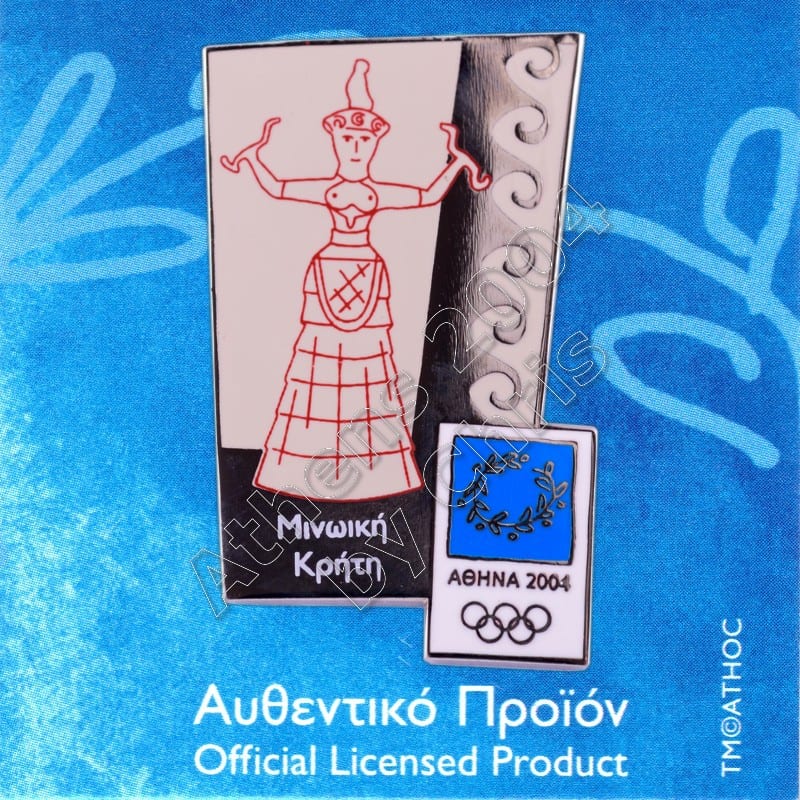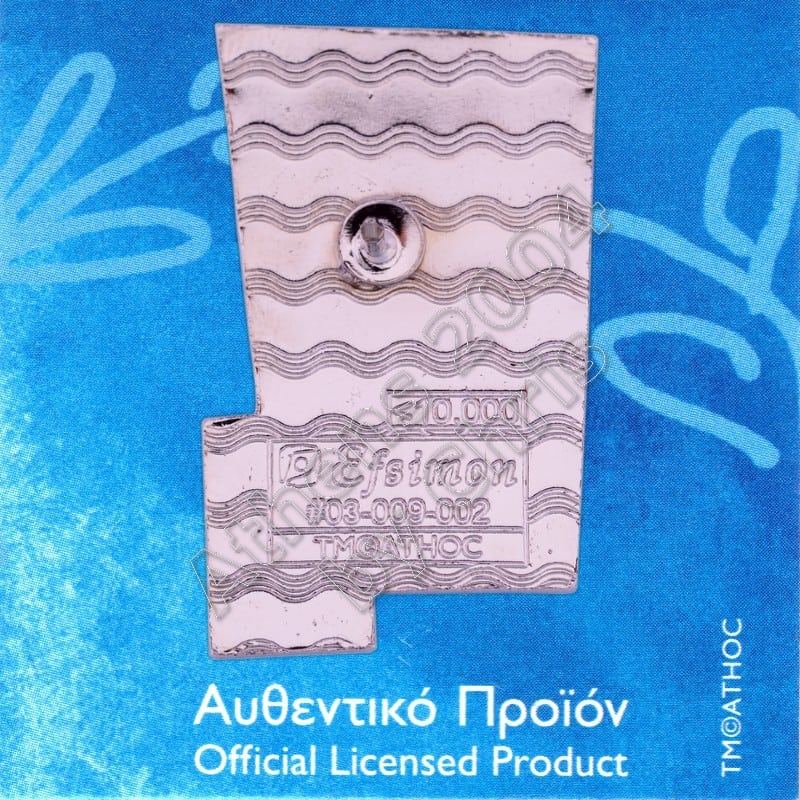Description
 Snake Goddess – Minoan Crete
Snake Goddess – Minoan Crete
Athens 2004 Olympic Games Pin
Snake Goddess indicates figurines of a woman holding a snake in each hand found during excavation of Minoanarchaeological sites in Crete dating from approximately 1600 BCE. These figurines were found only in house sanctuaries, where the figurine appears as “the goddess of the household”, and they are probably related with the Paleolithic tradition regarding women and domesticity.
The first ‘Snake Goddess’ figurines to be discovered were found by the British archaeologist Arthur Evans in 1903, in the temple repositories ofKnossos. The figurines are made of faience, a technique for glazing earthenware and other ceramic vessels by using a quartz paste. This material symbolized in old Egypt the renewal of life, therefore it was used in the funeral cult and in the sanctuaries. After firing this produces bright colors and a lustrous sheen.
These two figurines are today exhibited at the Herakleion Archeological Museum in Crete. It is possible that they illustrate the fashion of dress of Minoan women: a tight bodice which left the breasts bare, a long flounced skirt, and an apron made of material with embroidered or woven decoration. The larger of these figures has snakes crawling over her arms up to her tiara. The smaller figure holds two snakes in her raised hands, which seems to be the imitation of a panther. These were usually symbols of an earth goddess.
The pin depicts the “Snake Goddess” of the Minoan Crete
Product: Olympic Pin
Pin code: #03-009-002
Tiraz: <10.000pcs
Official Licensed Product
Licensed Manufacturer: Efsimon Collection





Reviews
There are no reviews yet.